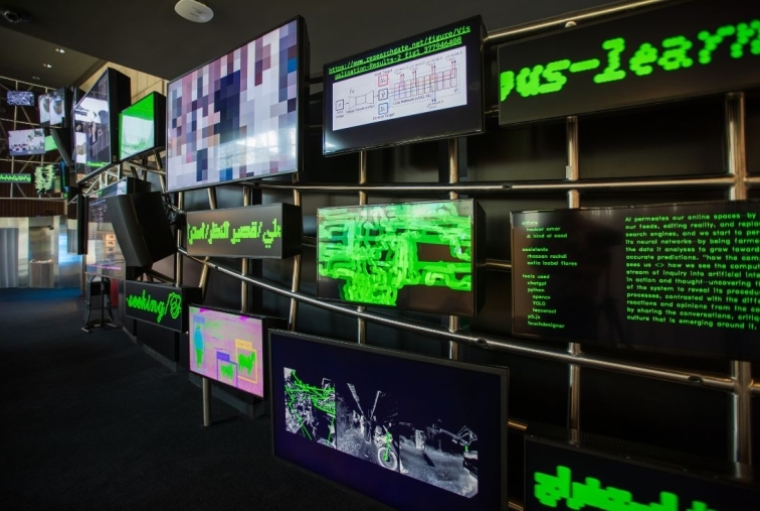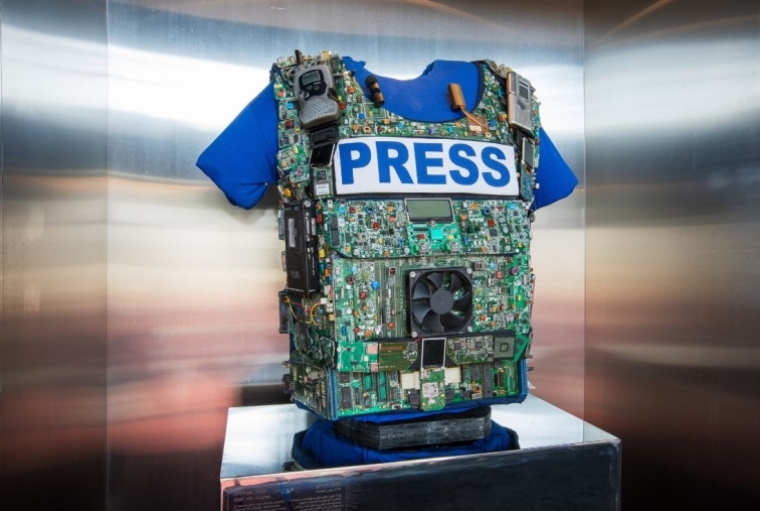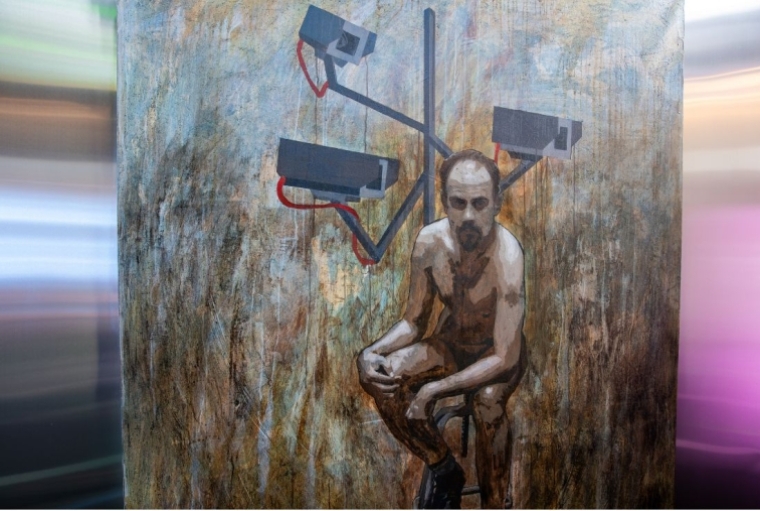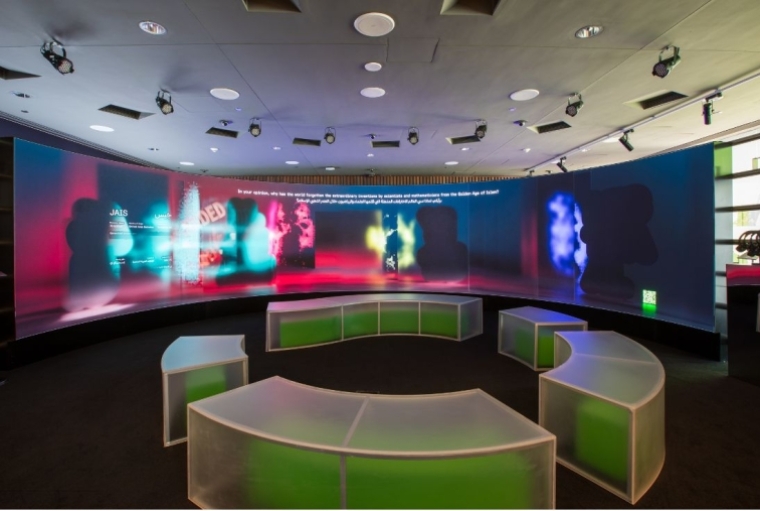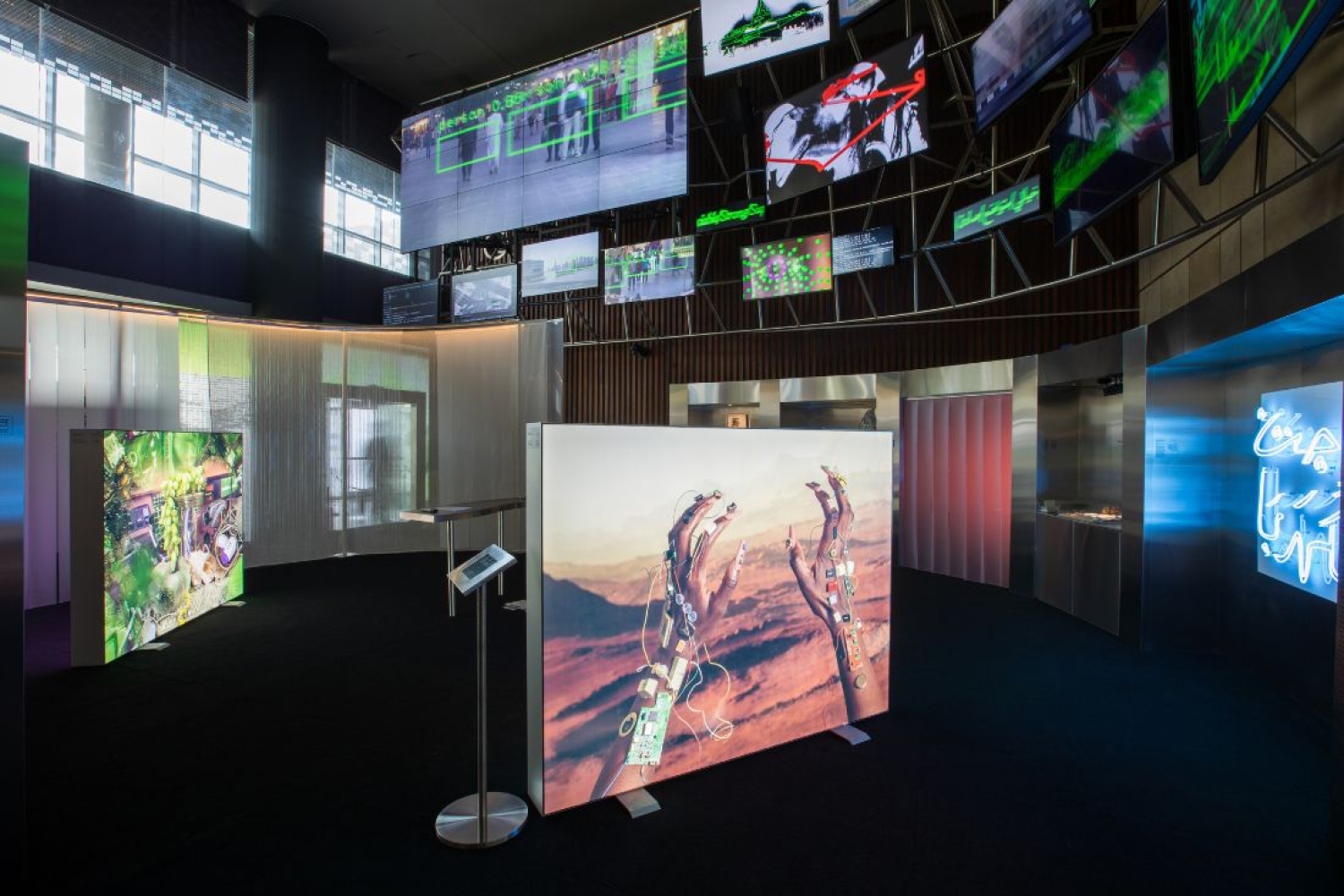

Northwestern Qatar’s Media Majlis Museum presents the exhibition Ai or Nay? Artificial vs. Intelligent, which explores the evolving relationship between human creativity and machine learning. This event examines the opportunities and challenges that AI presents in contemporary journalism.
The exhibition features a diverse collection of over 20 works by regional and international artists, showcasing visual arts, installations, and mixed media. We are in conversation with curator Jack Thomas Taylor and Alfredo Cramerotti, the museum director, to understand their vision for this showcase.
Alfredo Cramerotti
What is the primary mission of the Media Majlis Museum, and how does it aim to engage visitors with the concepts of media, communication, and culture?
Our primary goal is to present to the widest audience possible interdisciplinary exhibitions across art, technology, media and communication. We are very hybrid in nature – we don’t have a museum collection of artefacts, we commission, display and distribute new art and media work that unpack certain topics and themes relevant to society. We combine a lot of digital flows, on-screen and immersive experiences with objects and artefacts on loan from museums around the world, leveraging the former with the latter. We are not a stand-alone building, but a series of programmable spaces such as galleries, media walls, networked screens, event spaces and more, all situated within a bigger architecture, that of Northwestern Qatar. So there’s a lot of takeaway from the way we plan and operate, as we position the mm:museum as a next-generation museum.
What inspired the theme AI or Nay, Artificial vs Intelligent for this exhibition, and how do you see it contributing to the broader conversation about the role of AI in art and society?
The inspiration for the research leading up to the exhibition, public program and (bilingual) catalogue is the awareness that human learning (as in knowledge production, of which both art and journalism are key part of) and machine learning (as in the tools we create to help us in the production of knowledge) are not clear-cut separated field of expertise and operations. They are very much intertwined in multiple ways, from the historic predecessors of machine learning to what may come to the horizon in terms of sentient AI. We articulated therefore four paths – hindsight, insight, foresight, and oversight—which offer visitors the exploration of AI's transformative effects on privacy, identity, and representation through both the artistic and journalistic lens, from pre-Internet times to future-forward speculations.
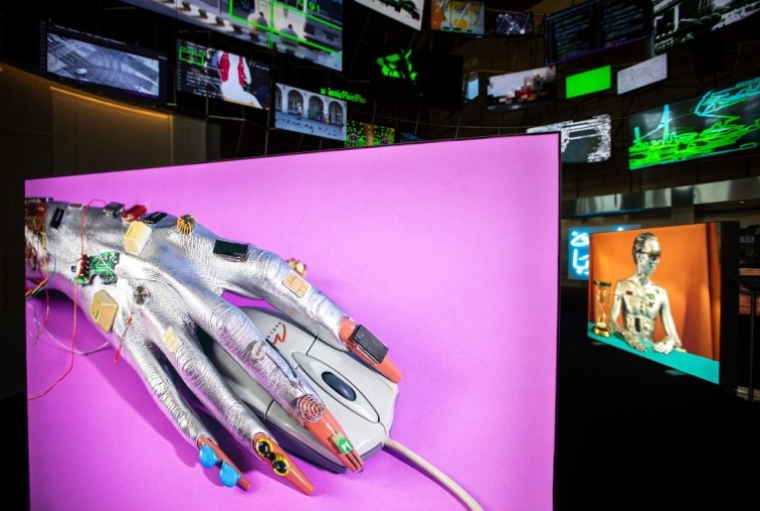
Can you share your thoughts on how the artists featured in the exhibition engage with the concept of artificial intelligence, and do you believe their works challenge or reinforce our perceptions of what is considered "intelligent"?
Artists are very good not only to appreciate and celebrate new technological developments, but importantly also to criticize them, use them in a different way than their main purpose, and ultimately raise awareness in the audience about the potential use, misuse and abuse of these new frontiers of human knowledge and capabilities. The exhibition features artists exposing conspiracy theories related to Hollywood movies, applying sharp-razor technical and social analysis on the production and use of mass-media devices, making visible hidden technologies that govern our daily lives, and more. It’s a fascinating journey through our thinking patterns, work and leisure activities, and overall existence of the ‘techno human’ being in 2025.
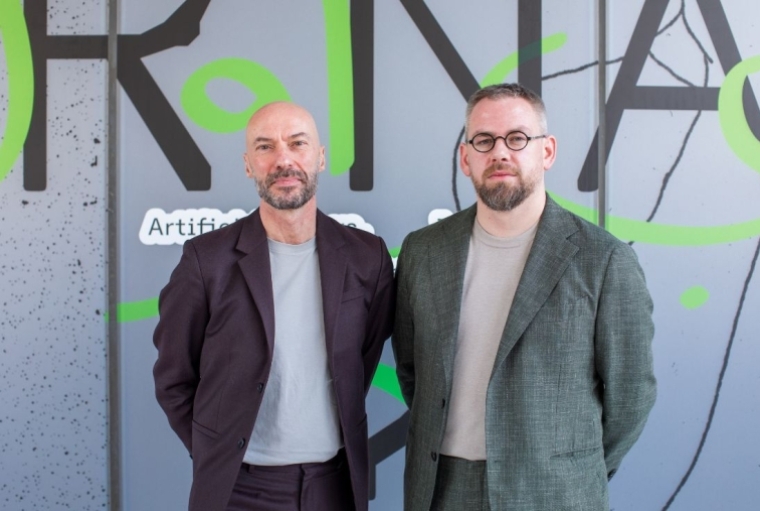
Jack Thomas Taylor and Alfredo Cramerotti
Jack Taylor
Can you describe your curatorial process and the initial discussions you had with Alfredo Cramerotti regarding the exhibition?
The nature of the exhibitions at the Media Majlis Museum necessitates a prolonged development period of approximately two years to cultivate the idea, themes, key messages, and interpretative objectives. However, with a rapidly evolving subject like artificial intelligence, this timeline becomes increasingly compressed. The exhibition concept originated in 2023, and with Alfredo's arrival at the museum in 2024, I was able to crystallize the thematic narratives under exploration. Alfredo's extensive career at the intersection of art, media, and technology provided a valuable litmus test to gauge the project's direction. Ai or Nay? offered a unique perspective, diverging from the conventional AI-focused exhibitions. The primary objectives were to render the invisible visible, the intangible tangible, and to incorporate a global south lens, which had not been extensively explored in previous endeavors. While the exhibition featured a diverse array of artists from around the world, its foundations and guiding principles were oriented towards presenting an alternative narrative to the prevailing Western and Eurocentric discourse.
Do you believe that AI could completely replace the human creative workforce? Is that the future we should expect?
I disagree. Instead, I believe that artificial intelligence will eventually collaborate with humans to enhance their effectiveness, but it will also fundamentally transform our current value system. AI democratizes knowledge by eliminating the scarcity of information that previously allowed experts like professors and medical professionals to monetize their expertise. This could lead to a greater emphasis on craftsmanship, handmade products, human-centric work, and empathy-driven activities. Currently, AI lacks true creativity and is ultimately driven by prompts, by humans. However, I warn that the convenience of relying on AI could foster human complacency, with individuals accepting the single option presented by AI algorithms rather than exploring diverse choices. In the past, the hundreds of options available in libraries gave way to thousands online, but now we depend on AI to provide just one. We all know there is never a just one choice, so why do we settle for the one offered by AI? This exhibition aims to raise more questions than provide answers, prompting viewers to become more diligent investigators, researchers, and interviewers as they navigate the evolving AI landscape.
Which piece from the exhibition resonates with you the most, and why?
The exhibition showcases a diverse array of provocative artworks that powerfully convey the complex history and multifaceted nature of artificial intelligence. For instance, Jan Zuiderveld's "Copy Machine / Dream Machine" vividly captures our ever-evolving relationship with technology, as it employs a hacked Xerox photocopier to produce artistic imagery informed by the input content. Another work is Amr Alngmah's "Artificial Target," which delves into the intricate interplay between software, hardware, and humans in the digital landscape. Alngmah's piece, which was commissioned specifically for this exhibition, prompts viewers to ponder how technologies intended for protection can also be weaponized, underscoring the dangers faced by investigative journalists. This work is displayed alongside the names of over 150 journalists documented by the Committee to Protect Journalists, who tragically lost their lives during the development of this exhibition, including those murdered in retaliation for their work and those who perished while carrying out their duties.
